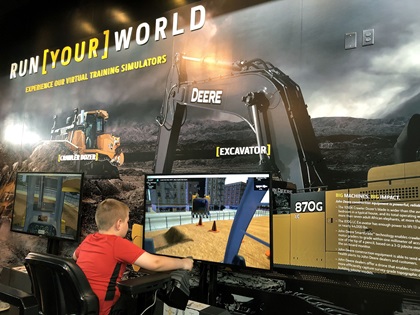A great ‘pick’ to explore the Midwestern spirit
Quad Cities region of Illinois and Iowa
In a vacation first for our family, my husband’s must-do list included shopping when we made our first visit to the Quad Cities region, a collection of communities straddling the Mississippi River and the Iowa-Illinois border.
Though he’s not a shopper, he couldn’t resist the chance to see Antique Archaeology, the store that Iowa native Mike Wolfe opened a decade before television viewers came to know him as the star of the History Channel’s American Pickers. The reality show, which debuted in 2010 and has surpassed 320 episodes, follows Wolfe and team around the country looking for treasures among others’ oft-forgotten stuff.
Though I don’t watch the show, it was interesting to see some of the rusted “treasures” the team had salvaged from barns, attics, and storage sheds. I made my own “find” in LeClaire, too. We walked from Antique Archaeology along Cody Road, named for the infamous frontiersman and showman William “Buffalo Bill” Cody, who was born in LeClaire in 1846. The town’s nine-block historic district has boutiques and more antiques shops, restaurants, a brewery, a winery, and a distillery. Though we didn’t have time to take a paddlewheel river cruise, we did stop at the Buffalo Bill Museum.
I was surprised to find that despite its name, the museum covers wide-ranging local history, and I had no idea I’d find an exhibit on the man credited with patenting the first U.S. design for a flight data recorder, or black box.
According to the display, James J. Ryan II went to high school in LeClaire and eventually taught mechanical engineering at the University of Minnesota. He worked on aviation equipment in the 1940s and 1950s, when he came up with his design for the Ryan Recorder and joined General Mills’ mechanical division to continue developing the concept. There are four models of his early recorders at the museum, along with artifacts from his research in aviation safety as well as automobile safety. His compartmentalized design is still the basis for today’s flight data recorders, and Ryan also is considered the inventor of the retractable safety seat belt for automobiles in the 1960s.
LeClaire was just one of the communities we explored in the Quad Cities region, which is about 120 nautical miles west of Chicago. Despite the name, five main cities make up the region—Rock Island, Moline, and East Moline in Illinois and Davenport and Bettendorf in Iowa—and at least another 15 smaller towns like LeClaire.
The two closest airports are Davenport Municipal Airport and Quad Cities International Airport. Another interesting aviation connection hangs in the Quad Cities International Airport atrium: a restored 1928 Velie Monocoupe. A Davenport-based company operated by John Deere descendants first purchased a company that developed airplane motors and eventually bought the company that had been manufacturing the Monocoupe.
We based our stay at The Current Iowa Hotel in downtown Davenport. The 1912 building became The Current in 2017 after a $35 million renovation. Its name plays off its location overlooking the Mississippi River, which you can see from the rooftop bar and restaurant.
We crisscrossed the river as we traveled throughout the area for three days. In addition to LeClaire, we explored Moline and Davenport, and we spent half a day in the middle of the river at Rock Island Arsenal.
Because it’s still an active U.S. Army facility, the 946-acre Rock Island Arsenal requires a visitor pass, so be sure to check the guidelines before traveling. On the island, you can tour the historic Colonel Davenport House, see the National and Confederate cemeteries and historic structures dating as far back as 1816, and visit the Mississippi River Visitors Center, home to the largest roller dam in the world. Closed for renovation until summer 2022, the Rock Island Arsenal Museum is the Army’s second oldest museum.
In Moline, it’ll be hard to miss the influences of John Deere—both the blacksmith who developed the first commercially successful, self-scouring steel plow in 1837 and the company he started and moved to Moline in 1848 for river and railroad access. Deere & Co. still has its world headquarters there.

The company website shares the various ways of experiencing John Deere in Moline and other nearby areas. At the very least, you’ll want to stop by the free John Deere Pavilion, where you can see and climb in new and vintage equipment and learn more about the company history and evolution through interactive and immersive exhibits. There also are tours available of historic homes that once belonged to Deere’s descendants. Check at the time of your visit to see if factory tours have resumed.
From our hotel, we walked to the year-round Freight House Farmer’s Market; took in the impressive collections of Haitian, Colonial Mexican, and Midwestern art at the Figge Art Museum; and saw several minor league baseball games at Modern Woodmen Park, home of the Quad Cities River Bandits.
Despite having to cross the river often, getting around the Quad Cities region is simple and in early December 2021 a long-awaited new Interstate 74 bridge opened completely to vehicle traffic. The $1.2 billion project included a basket-handle, true-arch twin bridge with four lanes plus a separate pedestrian/bicycle path and observation point in the middle.















